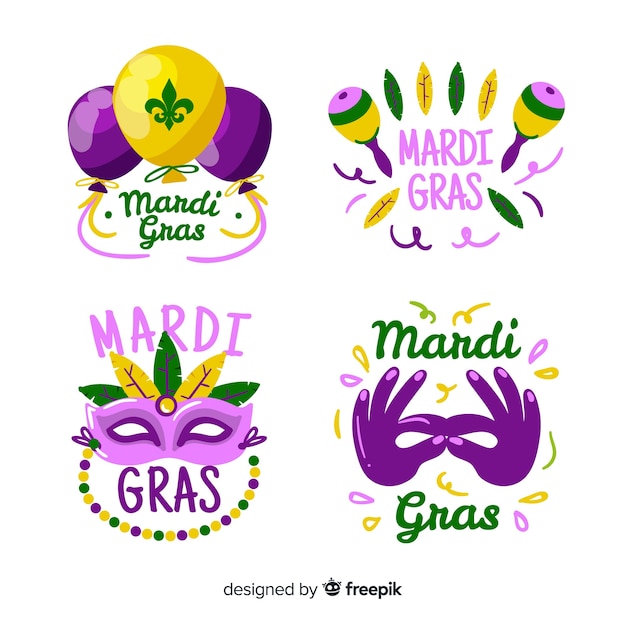Mardi Gras Facts – Celebrating History, Traditions, and Revelry

Mardi Gras originated in France and was brought to America by French settlers.
The colors associated with Mardi Gras are purple, gold, and green.
Mardi Gras is also known as Fat Tuesday, as it was traditionally the last day to indulge before the start of Lent.
The first Mardi Gras parade in the United States took place in Mobile, Alabama in 18
5. The world-famous Mardi Gras celebration in New Orleans attracts over a million visitors each year.
The tradition of throwing beads and other trinkets from floats during Mardi Gras parades started in the late 19th century.
The largest Mardi Gras celebration outside of the United States takes place in Rio de Janeiro, Brazil.
Mardi Gras is a legal holiday in Louisiana.
King cakes, a sweet pastry decorated with purple, green, and gold icing, are a traditional treat during Mardi Gras.
Mardi Gras celebrations in New Orleans are known for their lively music, with jazz and zydeco being popular genres.
Mardi Gras is celebrated in many countries around the world, including France, Brazil, Germany, and Canada.
The official colors of Mardi Gras represent justice (purple), power (gold), and faith (green).
The term krewe is used to describe the social organizations that put on the Mardi Gras parades and balls.
Mardi Gras was briefly banned in the United States in the 1700s and early 1800s due to its rowdy nature.
The traditional Mardi Gras food of choice in New Orleans is gumbo.
Mardi Gras Facts – Celebrating History, Traditions, and Revelry part 2
Mardi Gras parades in New Orleans typically include elaborate floats, marching bands, and costumed riders.
The Mardi Gras celebrations in Mobile, Alabama are older than those in New Orleans.
In many Mardi Gras celebrations, there is a designated King and Queen who preside over the festivities.
Mardi Gras is a time to let loose and have fun before the solemnity of Lent begins.
The term Mardi Gras translates to Fat Tuesday in English.
Mardi Gras is an important cultural event that showcases the diversity and heritage of the communities that celebrate it.
Mardi Gras parades often have a specific theme, with floats and costumes reflecting that theme.
Mardi Gras balls are formal events where attendees wear masks and elaborate costumes.
The famous Mardi Gras beads are traditionally meant to be given as a token of appreciation or friendship.
Mardi Gras is a time for people to come together and celebrate, regardless of social status or background.
Mardi Gras is deeply rooted in Catholic traditions, as it marks the beginning of the penitential season of Lent.
The first Mardi Gras parade in New Orleans took place in 18
Mardi Gras is a time when people can dress up and be whoever they want to be, without judgment.
Mardi Gras celebrations often include traditional dances, such as the Cajun two-step or the Zydeco shuffle.
Mardi Gras is an economic boon for cities and towns that host the celebrations, bringing in revenue from tourism.
The largest Mardi Gras float ever created measured over 330 feet long.
Mardi Gras parades in New Orleans are planned and organized months in advance.
Mardi Gras is known for its vibrant and flamboyant costumes, often featuring feathers, sequins, and masks.
Mardi Gras is celebrated on the day before Ash Wednesday, which marks the start of Lent.
Mardi Gras parades are family-friendly events, with many children participating as riders or marching in bands.
In some Mardi Gras traditions, wearing masks allows people to shed their inhibitions and embrace their true selves.
Mardi Gras celebrations often include street performers, such as jugglers, stilt walkers, and fire breathers.
Mardi Gras floats are often decorated with elaborate sculptures and props.
Mardi Gras music is a unique blend of various genres, including jazz, blues, and soul.
The Mardi Gras Indians are a unique cultural group in New Orleans who create elaborate, handmade costumes to pay tribute to Native American and African heritage.
Mardi Gras celebrations in Louisiana are known for their delicious and diverse cuisine, featuring dishes like crawfish, jambalaya, and beignets.
Mardi Gras parades often have celebrity grand marshals, adding to the excitement of the festivities.
The tradition of Mardi Gras masks dates back to medieval Europe when masks were worn to conceal identities during various social events.
Mardi Gras celebrations often extend beyond a single day, with events and parties happening throughout the week leading up to Fat Tuesday.
Mardi Gras is a time to come together as a community, celebrate life, and embrace the joy of living in the present moment.
